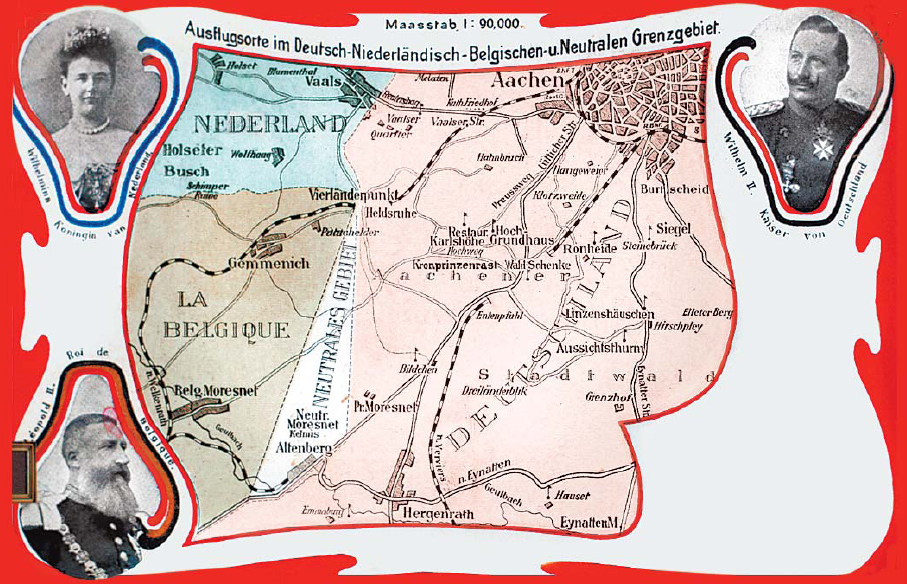All this recent talk on Twelve Mile Circle about strange European borders and condominium arrangements brings me to one of my favorite former anomalies: Neutral Moresnet. This place existed as somewhat of a no-man’s-land lodged firmly between sovereign neighbors from 1816 to 1920.
Europe looked different as Napoleon’s empire dissolved. The victors negotiated amongst themselves and doled out territories. Thus, a United Kingdom of the Netherlands emerged. The Kingdom held discussions with its neighbor, the Kingdom of Prussia, to formalize their common border. Fortunately, talks between the two kingdoms were generally successful. Conceptually they agreed to recognize older, established boundaries and things were fine.
Establishment
They carved and they sliced and they compromised. Finally they were down to a single small triangle of land of just 3.5 square kilometers (1 square mile) left unresolved. This was a spot containing a zinc mine with valuable mineral deposits coveted by both nations. So they decided to leave it as neutral territory albeit temporarily. They would administer it jointly — a condominium — until they could figure out how to deal with it. Well, time passed and the “quick fix” lasted for more than a hundred years, with Belgium inheriting the Dutch role upon its independence in 1830.
These are the approximate boundaries of what was once Neutral Moresnet, now part of Belgium. The southern border followed a road between Liège and Aachen. The northern tip terminated at the spot that today is the Belgium-Germany-Netherlands (BEDENL) tripoint at Vaalserberg.[1] It’s main town is Kelmis and its inhabitants speak German as their native language. This is somewhat unusual for Belgium. Certainly, German is one of three official languages in Belgium. However fewer than one percent of its population uses German except within these borderlands.
Economy

A mining company dominated the history of Neutral Moresnet, employing its populace, owning the homes and running its shops. It was a company town that existed solely to extract zinc from the surrounding countryside within the borders of the condominium. At its height perhaps 4,000 people lived here. They enjoyed full employment, low taxes and an exemption from compulsory military service to either of its custodians.
The sovereign neighbors each designated a royal commissioner who in turn appointed a mayor to run the little territory. Neutral Moresnet had neither independence nor inclusion within a sovereign nation. Rather, it existed in an odd in-between limbo.
Condominium arrangements collapse over time and Neutral Moresnet met this predictable fate. First the zinc played out and weakened its underlying premise for existence. Next, Belgium and Germany fought on opposing sides of the First World War. To the victor go the spoils. So Neutral Moresnet joined Belgium in the aftermath, with formal annexation in 1920. Germany briefly reclaimed it during the Second World War but it returned to Belgium permanently afterwords. A much more detailed discussion of its colorful history (including an odd tie-in with the Esperanto language) appears on Wikipedia’s Neutral Moresnet page.
12MC Loves Footnotes!
[1]Vaalserberg literally means “Mount Vaals.” I love it when a whole bunch of strange geographic coincidences collide. Not only is this point the northern terminus of the old Neutral Moresnet condominium and the location of the current BEDENL tripoint, but in addition it’s the Netherlands Highpoint at 323 meters (1059 feet). Outstanding!

Leave a Reply